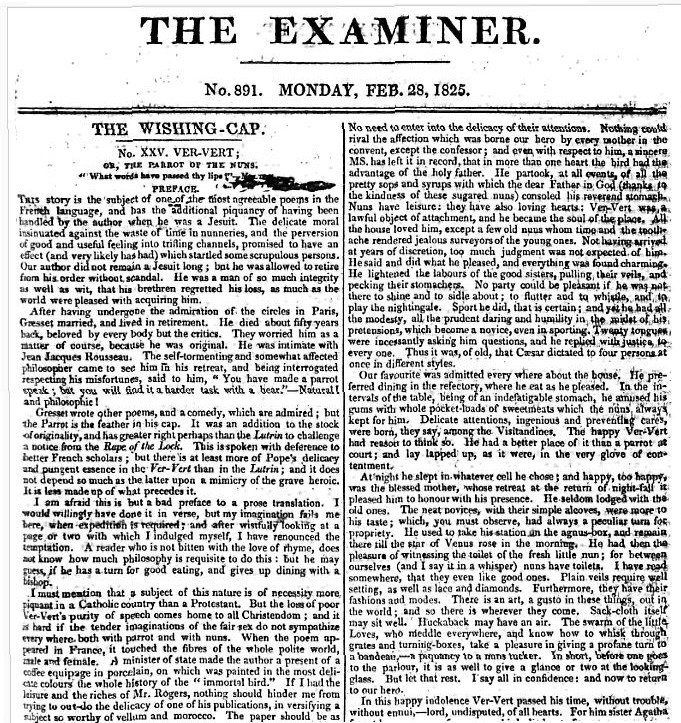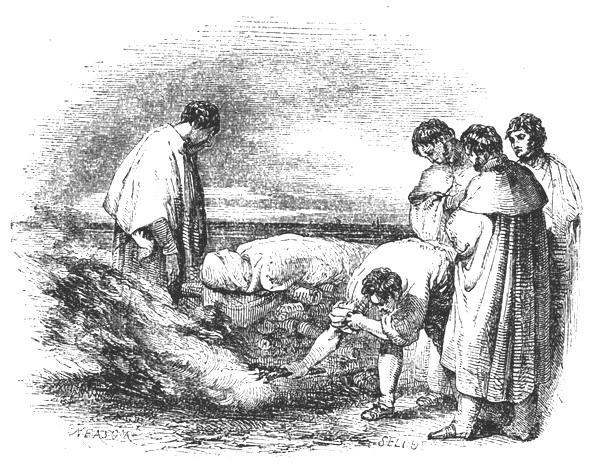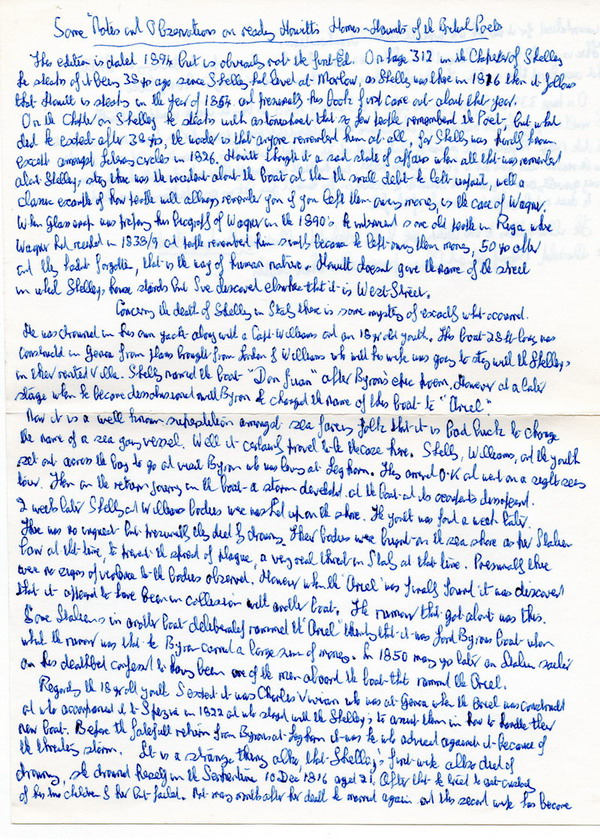
Parijs
- 19e eeuw ![]() Jean Baptiste Louis Gresset
Jean Baptiste Louis Gresset
![]() Overzicht vertalingen
Overzicht vertalingen ![]() Hunt, Shelley, Byron
Hunt, Shelley, Byron
 |
|
CuBra |
| Leigh Hunt - The Examiner, 28 februari
1825 (fragment)
|
|
| Concerning the Death of Shelley in Italy | |
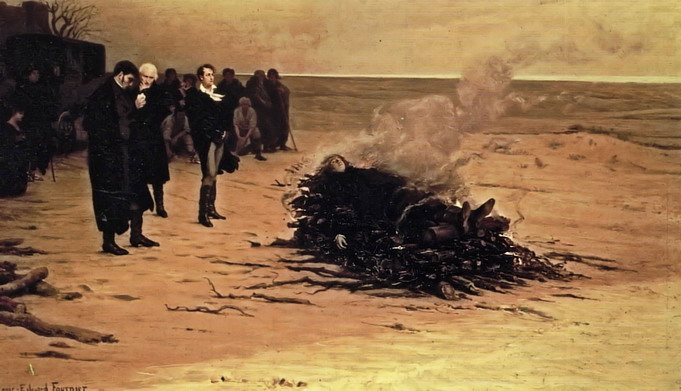 Edouard Fournier. Staand v.l.n.r.:
Trelawny, Hunt, Byron.
Edouard Fournier. Staand v.l.n.r.:
Trelawny, Hunt, Byron. |
|
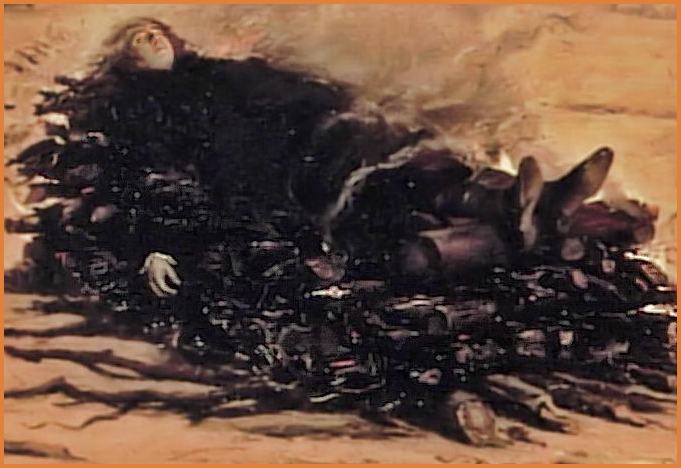 |
|
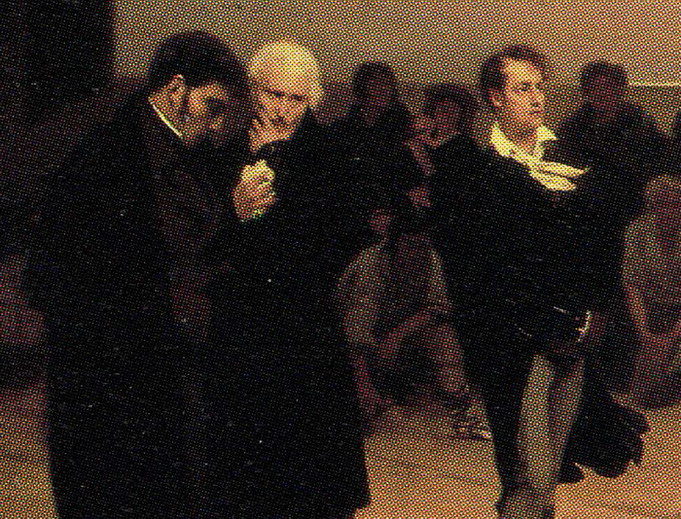 |
|
|
Concerning the Death of Shelley in Italy Ed Schilders (red.) De hier gereproduceerde aantekeningen van een onbekende auteur / lezer trof ik aan in Homes & Haunts of the British Poets (1894) van William Howitt (1792-1897). Getuige een ex libris aan de binnenzijde van het voorplat behoorde dit exemplaar toe aan John Greener, die op het schutblad noteerde: ‘J Greener. Gateshead. april 1st ’08.’ Een stempel boven het ex libris maakt duidelijk dat het boek later heeft toebehoord aan ‘Rothwell Public Library’. Waarschijnlijk is het pas daarna in bezit gekomen van de onbekende lezer, en nog later in het antiquariaat in Hay-on-Wye waar ik het kocht. De aantekeningen zijn door mij gescand en getranscribeerd ter vermaak van de vrienden van Papier van Purcell, in een oplage van acht exemplaren.
"Concerning the death of Shelley in Italy" zijn de eerste woorden waarmee een onbekende schrijver / lezer enige opmerkingen noteerde over de dood in 1822 van Percy Bysshe Shelley (1792-1822) na lezing van Homes & Haunts of the British Poets (1894) van William Howitt, waarin een hoofdstuk aan Shelley wordt gewijd.
De gravure hierboven siert het begin van het hoofdstuk over Shelley, maar Howitt gaat verder niet in op Shelleys schipbreuk en dood in Italië. Blijkbaar vond de onbekende lezer het aangenaam om zijn kennis hieromtrent in het boek achter te laten. Het desbetreffende deel van zijn handschrift wordt hier weergegeven. De aantekeningen zijn niet exact te dateren, maar zijn zeker niet van voor 1950.
Concerning the death of Shelley in Italy there is some mystery of exactly what occured./ He was drowned in his own yacht along with a Capt. Willams and an 18 yr old youth. His boat [,] 28 ft long [,] was / constructed in Genoa from plans brought from London [by?] Williams who with his wife was going to stay with the Shelleys / in their rented villa. Shelley named the boat "Don Juan" after Byron's epic poem. However at a later / stage when he became desillusioned with Byron he changed the name of this boat to "Ariel"./ Now it is a well known superstition amongst sea faring folks that it is bad luck to change / the name of a sea vessel. Well it certainly proved to be the case here. Shelley, Williams, and the youth / set out across the bay to go and visit Byron who was living at Leghorn. They arrived O.K and went on a sightseeing / tour. Then on the return journey in the boat a storm developped and the boat and its occupants disappeared./ 2 weeks later Shelley and Williams bodies were washed up on the shore. The youth was found a week later./ There was no inquest but presumably they died by drowning. Their bodies were burnt on the sea shore as [was] the Italian / law at that time, to prevent the spread of plague, a very real threat in Italy at that time. Presumably there / were no signs of violence to the bodies observed. However when the "Ariel" was finally found it was dicovered / that it appeared to have been in collision with another boat. The rumor that got about was this./ Some Italians in another boat deliberately rammed the "Ariel" thinking that it was Lord Byrons boat upon / which the rumor was that the Byron carried a large sum of money. In 1850 [,] many years later [,] an Italian sailor / on his deathbed confessed his having been one of the men aboard the boat that rammed the Ariel. |

|
